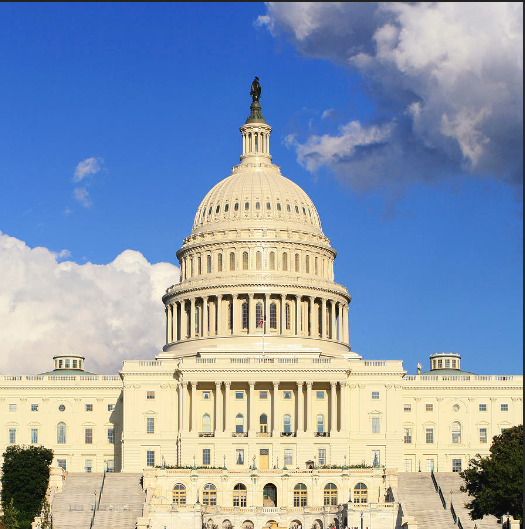Neurodiverse Youth & Employment Equity

by Danielle Chiaraluce
Neurodiversity and Employment
Neurodiverse youth face many barriers to employment, leading to an unemployment rate of 30-40% for neurodiverse adults: three times the rate of unemployment for people with disabilities, and eight times the rate for people without disabilities. Neurodiverse youth—which generally means individuals aged 16 - 24—possess unique strengths, but experience challenges due to the way their brains process information. Neurodiversity includes Autism Spectrum Disorder, ADHD, executive functioning challenges, developmental disabilities, and other differences. Neurodifferences are often stigmatized, invisible, or masked, and tend to not have representation on the DEI agenda despite approximately 15 to 20% of the world’s population being neurodivergent.
A gold standard for youth and adults with disabilities who choose to work is “real work, for real pay”, in a job that aligns with their career interests regardless of any needed accommodations or support. The principles of Employment First, a national DOL systems-change framework, center on the principle that all individuals, including those with the most significant disabilities, are capable of fully participating within Competitive Integrated Employment (CIE).
People with disabilities that do find employment are less likely to work in management, professional, and related occupations than those without a disability. A viable solution to this problem is to offer inclusive registered apprenticeship programs (RAPs) in high-demand industries that offer opportunities for career advancement. RAPs are typically at least one year in duration. They offer paid work experience, instruction, mentorship, and an industry-recognized credential. Some RAPs also reward college credit. This form of work-based learning takes place across all industries and can help build a diverse pipeline of skilled workers.
Career Exploration
Finding a job can be an overwhelming challenge for neurodiverse youth. But the process can be made easier through career exploration that allows youth to actively participate in employment experiences and career-related discussions with community-based organizations, educators, or community colleges. Employment Support Professionals (ESPs) and school-based professionals should strengthen career exploration and expand the recruitment of neurodiverse youth into RAPs by working with RAP sponsors and employers who agree to offer career exploration opportunities.
Through structured experiences, neurodiverse youth can learn more about their interests and identify what skills they have, or may need to develop, for their chosen career pathway. For employers, this can be a unique recruitment strategy. Career Exploration provides the opportunity for youth to try out hands-on job experiences, which serves a dual purpose to the employer of a “working interview.” This is an in-person interview that takes place on-the-job, where youth can be assigned some job duties and be observed through paid experiences in the work environment. During the working interview, sponsors and employers can observe a candidate’s interest and ability performing a specific job or task, rather than rely upon a traditional interview, which is not always a successful determinant of these factors or an inclusive hiring practice.
Neurodiverse youth can benefit from information about the local job market including job descriptions, wages, and career opportunities. The National Collaborative on Workforce and Disability for Youth (NCWD/Youth) identified guideposts for the successful transition of neurodiverse youth to adulthood. Career discussions should include information on how to secure a Benefits Analysis, which provides information about personal income thresholds in relation to an individual's benefits, to understand the impact of employment on eligibility for public benefits, as well as resources such as Social Security Administration Ticket to Work funds, ABLE Accounts, and the development of a traditional and visual resume.
The Apprenticeship Pathway
Despite the opportunities they provide—experience with core job skills, industry-specific knowledge, and a wage—RAPs are traditionally underused as an employment option for neurodiverse youth.
There are various funding options for sponsors and employers of RAPs to support neurodiverse youth. Funding streams such as WIOA Title I, Title III Employment Services, Title IV funds, and Supplemental Nutrition Assistance Program (SNAP) employment and training funds can be braided to support the apprentice, RAP sponsor, trainer, and employer. RAP sponsors should facilitate connections for their training providers so they can apply to receive WIOA funding through Individual Training Accounts (ITAs) for adults and dislocated workers, or to become a youth activity provider on a competitive basis through a grant or contract. Funding opportunities specific to neurodiverse youth and adults include Vocational Rehabilitation (VR) Pre-Employment Training Services (Pre-ETS). VR offers in-school youth, ages 14-21, Pre-ETS until age 22.
Inclusive apprenticeships foster a culture where everyone can contribute in meaningful ways. There are numerous approaches to creating successful inclusive apprenticeship programs. Throughout recruitment to onboarding, training and retention, RAP sponsors can provide employers with information on how RAPs offer great benefits through an inclusive work-based learning model, and assist employers by administering accessible hiring and training practices. Inclusive models are distinguished by full access, work accommodations, and essential support throughout all phases of the RAP. The U.S. Department of Labor’s Partnership on Inclusive Apprenticeship (PIA) developed an inclusive apprenticeship toolkit that can be used by intermediaries or employers when developing inclusive apprenticeships. RAPs afford neurodiverse youth opportunities to compete in a global economy, and with the right support, apprentices are more likely to complete training, develop strong relationships with their employer, and become a productive member of the workforce.
The Cybersecurity Youth Apprenticeship Initiative
The Cybersecurity Youth Apprenticeship Initiative (CYAI), led by ICF, fosters inclusion in Registered Apprenticeship Programs. CYAI is funded by the U.S. Department of Labor’s (DOL) Employment and Training Administration Office of Apprenticeship. It promotes the sustainable development of cybersecurity apprenticeship programs for youth aged 16-21.
CYAI has created resources written from two perspectives. First, a resource for practitioners highlights ways that employment-support professionals can facilitate access for neurodiverse youth to RAPs. The second addresses RAP program sponsors, illustrating how they can create an apprenticeship pathway for this population. RAP sponsors should identify and partner with employment support professionals from state, education, and community-based organizations, as these relationships will provide excellent opportunities to support neurodiverse apprentices, expand collaboration with state agencies, and braid funding.
Lastly, ESPs should review CYAI's Cybersecurity Career Guide and discuss with youth what jobs exist in IT and cybersecurity, as well as the education or experience necessary for those positions
To discuss
CYAI or these resources, please reach out to
Danielle.Chiaraluce@icf.com
and visit
www.cyai2024.org.


National Association of Workforce Boards | All Rights Reserved |
Created by Olive + Ash.
Managed by Olive Street Design.








